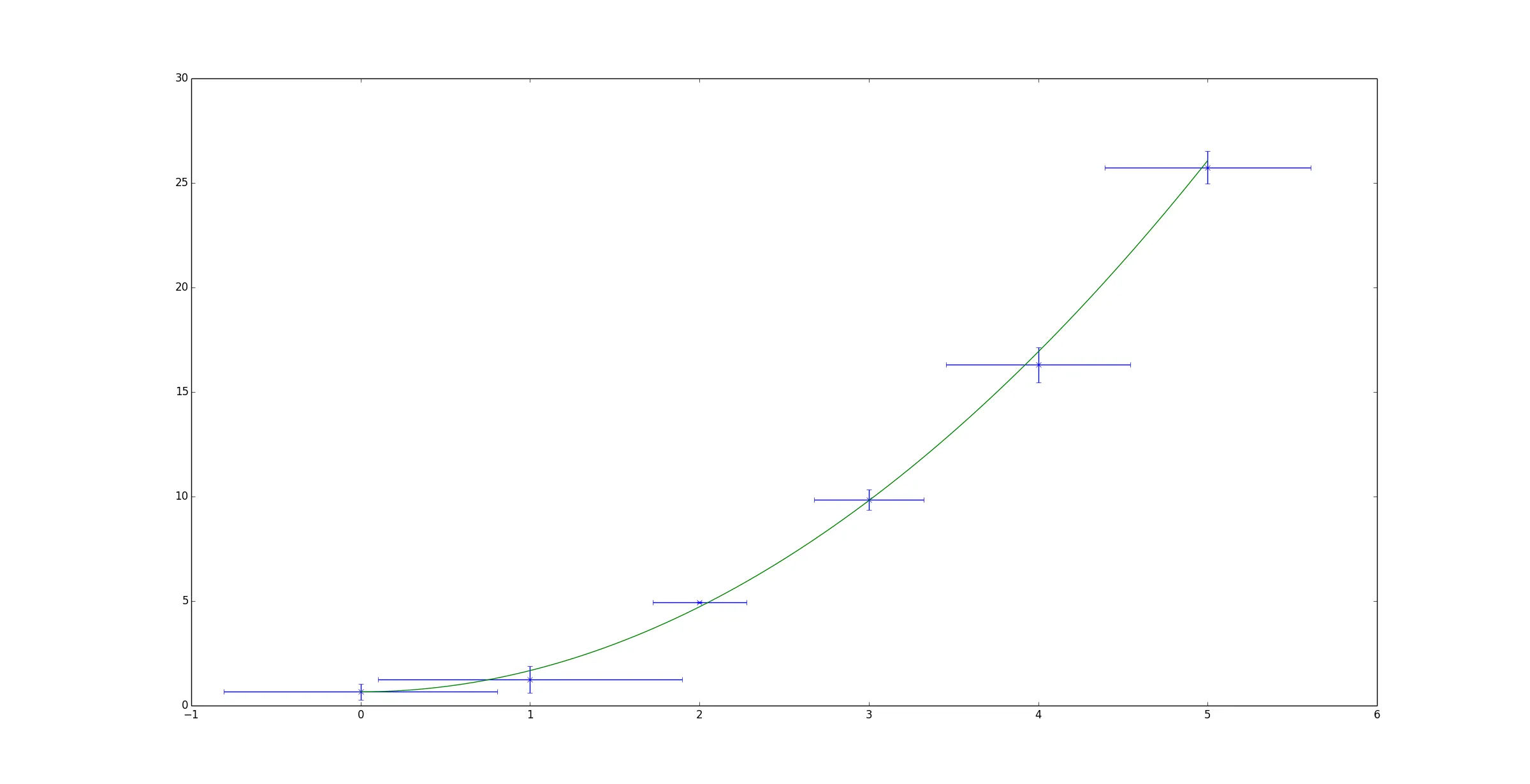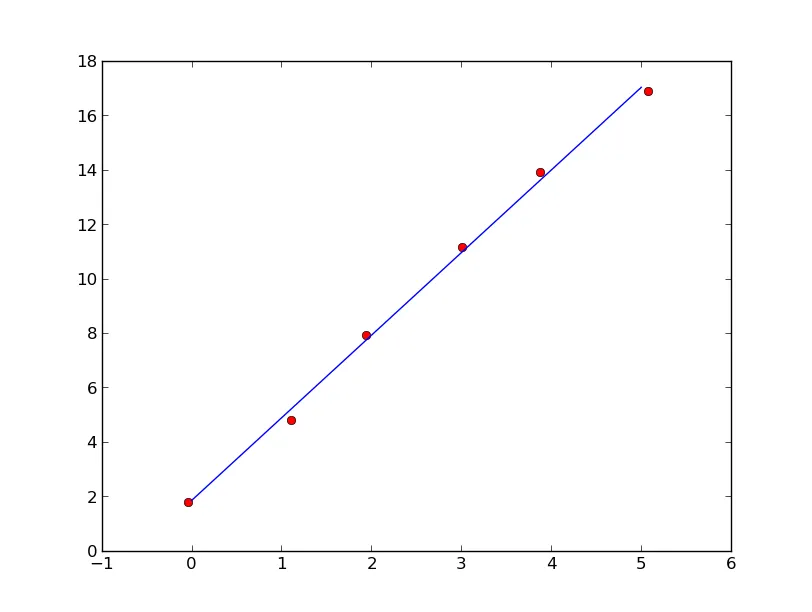Scipy中的正交距离回归可以使用x和y的误差进行非线性拟合。
下面显示了一个基于scipy页面中给出的示例的简单示例。它试图将二次函数拟合到一些随机数据。
import numpy as np
import matplotlib.pyplot as plt
from scipy.odr import *
import random
x = np.array([0, 1, 2, 3, 4, 5])
y = np.array([i**2 + random.random() for i in x])
x_err = np.array([random.random() for i in x])
y_err = np.array([random.random() for i in x])
def quad_func(p, x):
m, c = p
return m*x**2 + c
quad_model = Model(quad_func)
data = RealData(x, y, sx=x_err, sy=y_err)
odr = ODR(data, quad_model, beta0=[0., 1.])
out = odr.run()
out.pprint()
'''Beta: [ 1.01781493 0.48498006]
Beta Std Error: [ 0.00390799 0.03660941]
Beta Covariance: [[ 0.00241322 -0.01420883]
[-0.01420883 0.21177597]]
Residual Variance: 0.00632861634898189
Inverse Condition #: 0.4195196193536024
Reason(s) for Halting:
Sum of squares convergence'''
x_fit = np.linspace(x[0], x[-1], 1000)
y_fit = quad_func(out.beta, x_fit)
plt.errorbar(x, y, xerr=x_err, yerr=y_err, linestyle='None', marker='x')
plt.plot(x_fit, y_fit)
plt.show()


